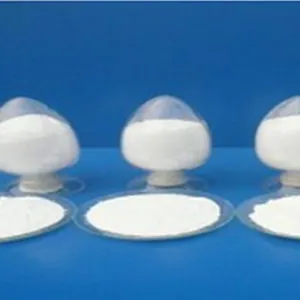
types of non aqueous solvents
Types of Non-Aqueous Solvents
Non-aqueous solvents play a crucial role in various chemical processes and applications, ranging from industrial manufacturing to laboratory research. Unlike aqueous solvents, which utilize water as the solvent, non-aqueous solvents are composed of organic solvents, ionic liquids, and other substances that do not primarily use water. This article explores the different types of non-aqueous solvents, highlighting their properties, uses, and significance in scientific and industrial fields.
Types of Non-Aqueous Solvents
Ionic liquids represent another category of non-aqueous solvents, characterized by their unique properties. These salts are liquid at or near room temperature and typically consist of large organic cations and smaller anions. Ionic liquids have gained popularity due to their low volatility, thermal stability, and ability to dissolve a wide range of materials, including organic, inorganic, and polymers. They are increasingly used in green chemistry, as they can often replace more hazardous solvents, thereby reducing environmental impact. Their unique properties enable applications in catalysis, electrochemistry, and biomass processing, signaling a shift towards more sustainable practices.
types of non aqueous solvents

In addition to organic solvents and ionic liquids, supercritical fluids, particularly supercritical carbon dioxide (scCO2), are also considered non-aqueous solvents. When carbon dioxide is pressurized above its critical temperature and pressure, it becomes a supercritical fluid, exhibiting both gas-like and liquid-like properties. This unique behavior makes scCO2 an excellent solvent for extracting essential oils, decaffeinating coffee, and even in polymer processing. Its environmentally friendly nature and ability to dissolve a wide variety of substances make it a preferred choice in industries seeking to minimize solvent-related hazards.
Non-aqueous solvents also extend to various specialty solvents used for specific applications. For instance, dimethyl sulfoxide (DMSO) is known for its ability to penetrate biological membranes and is frequently employed in pharmaceuticals and research. Likewise, N,N-dimethylformamide (DMF) is another versatile solvent used in synthesis and as a reaction medium.
In conclusion, non-aqueous solvents encompass a diverse range of substances, each with unique properties and applications. From organic solvents to ionic liquids and supercritical fluids, these solvents provide essential functions in chemical processes, offering solutions that aqueous solvents may not. Their significance in promoting efficiency and sustainability in various industries cannot be overstated, making them indispensable tools in modern science and technology. As research continues to advance, the development of new non-aqueous solvents will likely lead to even more innovative and environmentally friendly applications in the future.
-
Buy High-Quality Trichloroisocyanuric Acid for Sale | TCCA 90% SupplierNewsAug.30,2025
-
Pure Sodium Dichloroisocyanurate Dihydrate | Powerful DisinfectantNewsAug.29,2025
-
Industrial Chemicals: Quality & Purity for Every IndustryNewsAug.28,2025
-
Nitrile Rubber Honoring Strict Production StandardsNewsAug.22,2025
-
Aspartame Ingredients Honoring Food Safety ValuesNewsAug.22,2025
-
Fertilizer for Balanced Plant NutritionNewsAug.22,2025
-
Cyanide Gold Processing with High Purity AdditivesNewsAug.22,2025
Hebei Tenger Chemical Technology Co., Ltd. focuses on the chemical industry and is committed to the export service of chemical raw materials.
-

view more DiethanolisopropanolamineIn the ever-growing field of chemical solutions, diethanolisopropanolamine (DEIPA) stands out as a versatile and important compound. Due to its unique chemical structure and properties, DEIPA is of interest to various industries including construction, personal care, and agriculture. -

view more TriisopropanolamineTriisopropanolamine (TIPA) alkanol amine substance, is a kind of alcohol amine compound with amino and alcohol hydroxyl, and because of its molecules contains both amino and hydroxyl. -

view more Tetramethyl Thiuram DisulfideTetramethyl thiuram disulfide, also known as TMTD, is a white to light-yellow powder with a distinct sulfur-like odor. It is soluble in organic solvents such as benzene, acetone, and ethyl acetate, making it highly versatile for use in different formulations. TMTD is known for its excellent vulcanization acceleration properties, which makes it a key ingredient in the production of rubber products. Additionally, it acts as an effective fungicide and bactericide, making it valuable in agricultural applications. Its high purity and stability ensure consistent performance, making it a preferred choice for manufacturers across various industries.





